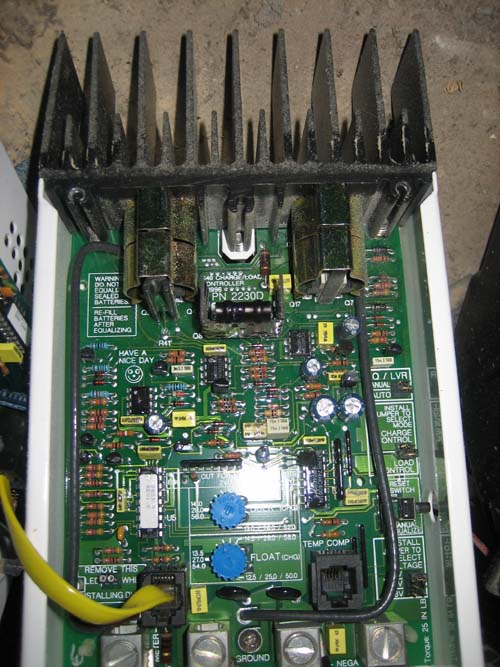I would run the C-35 as a Diversion, or dump load controller. I would not run the C-35 as a charge controller with a highly rippled DC source such as your Ametek 30V motor. It would play havoc on the 3 stage charging alogrithms I would suspect. Ideally you would rig a dump load such as a resistance heater, or water heating elements, such that it does not exceed the rating of your controller when functioning as a diversion load controller (this may be different than the rating in charge control mode, so read your manual), but ideally consumes more than the maximum sustained generation you will see. Do not use light bulbs, as if they burn out, they become open circuit, and you will have no load to keep the voltage down. Since you are running an Ametek 30V, I presume you have a system voltage of 12V. I don't think that even under a sunny wind storm you would likely exceed 30 amps, so if your controller can handle it, rigging a dump load that draws about 30 amps, or 360 watts at 12V would be sufficient - read your manual to see the maximum amps that your system can switch, and ensure that I=V/R where I is the amps, V is the system voltage, and R is the resistance of your dump load - that the value for the resistance of your dump load is large enough that the value of I, for the largest value of V that your system will see which is the voltage that you switch on the dump load at, is less than the maximum amps that your load controller can switch.
Here is a photo of the guts of a C-40 that I have rigged up as a diversion load controller for a C-40.

For the C40, you simply set the jumpers on the right side of the board in the photo, set the LVR jumper to 'Auto', the mode jumper to 'load control', then select the jumper for the appropriate voltage. Once you have done that, you adjust the variable resistors, which are the two blue wheels near the center, for the voltages that you want the load turned on at and off at. You turn the diversion load off at a voltage far enough below the voltage that the diversion load is turned on at so that the system will not cycle too rapidly. Then you can connect the controller to the batteries and the load. Those voltage controls aren't real accurate, so you should probably get a meter, and test the voltages to make sure they are what you want for your batteries. Obviously use a wire size that can handle the amps, at least 10 guage for 30 amps. I also always use a fuse right off of the positive post of the battery, just in case the insulation were to get cut, or some other problem developed with the wiring. Since I am under 30 amps, I use a 30 amp auto type fuse in an inline holder.
Again, for your C35, and maybe even for different models of the C40 it may be different, so read your manual.
hope this helps a little, Rich